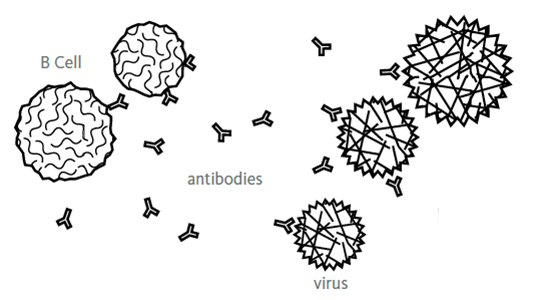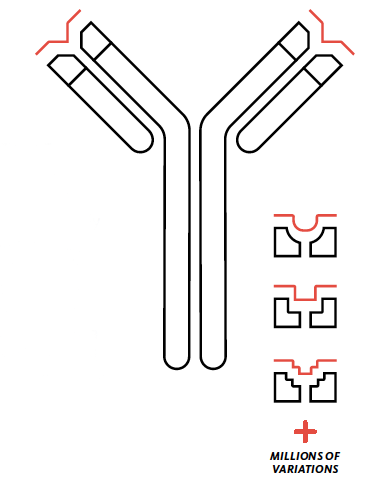
Lymphocytes—Our Body’s Dynamic Defenders
We’ve now unlocked some of our body’s incredible secrets for rapid response to the ever-changing threat from microbe invaders.
“The life of the flesh is in the blood
” (Leviticus 17:11). What we know today confirms what God taught the Israelites nearly 4,000 years ago. Blood really does sustain life. Red blood cells carry oxygen to body tissues. The liquid portion of blood, plasma, carries water and nutrients to nourish cells, while carrying away harmful wastes from their activities.
Other cells in the blood (white blood cells) defend us from constant intrusion and attack by bacteria, viruses, fungi, protozoa, and even microscopic invertebrates. These potential intruders are sometimes collectively called microbes.
Microbes easily enter the body through portals such as the mouth and nasal cavity. Every time you inhale, millions upon millions of microbes enter your respiratory passage. Every time you take a bite of food, millions of microbes enter your digestive system along with the food.
A human mouth contains millions of microbes representing more than 400 species of potential invaders. Millions of microbes colonize human skin. The colon, or lower digestive system, contains billions of microbes. We are literally walking ecosystems colonized by hundreds of species of potentially harmful microbes. In fact, bacterial cells in our bodies outnumber the human cells. How do we survive? Was this interrelationship between humans and microbes part of God’s original plan for creation?
A look at just one of the many types of white blood cells, lymphocytes, demonstrates God’s purpose for all the white blood cells that defend humans against microbes. Lymphocytes play an important role in protecting the human body’s sterile regions, such as the lungs, and combatting infections. They provide a fascinating example of how God sustains life despite humans’ dependence on microbes that can harm us if they get to places they don’t belong—we need many types of microbes to aid in digestion by providing nutrients, for example, but we have to keep the right microbes in the right places.
Lymphocytes are part of the acquired immune system. That means they adapt to new threats and provide defenses we do not have at birth. Lymphocytes circulate in the blood and the lymphatic system (the other fluid circulation system in humans) looking for microbes that might cause an infection. They can recognize foreign proteins produced by microbes, and they have the power to destroy the invader and call other white blood cells to help.
Lymphocytes (specifically B lymphocytes) fight invading microbes by secreting antibodies, a special kind of protein molecule, to tag them for destruction. Differentiating a particular molecule on the surface of a harmful microbe from the billions of native molecules in the body is no small task. And the job doesn’t end there. Each antibody is custom made to defend against one specific molecule. But God created B lymphocytes with the genetic ability to produce the millions of different antibodies we need.
Antibodies get their name because each one works against a specific microbe in the body. An antibody molecule is shaped like a Y. The base and arms of the Y, called the constant region, are the same for all antibodies in a class (different classes—labeled A, G, D, E, and M—combat different types of microbial infections). The tips of the arms on the Y are the variable region. This is where each antibody has a specific sequence of amino acids that can bind a specific antigen (a unique marker protein) on a microbe.
Picture a person standing on both feet with arms outstretched above their head. The hands are like the antibody’s variable region. The difference is that the antibody’s “hands” can grab only one specific molecule. It’s as if the “hand” is a key that fits one specific lock. Since there are millions of possible molecules, B lymphocytes must produce and secrete millions of different antibodies.
But there’s a problem. The human body contains genes for producing only about 100,000 different proteins, not millions. One of the most ingenious processes that God put into human cells is B lymphocytes’ ability to rearrange their own genes to produce millions of different antibody proteins. B lymphocytes are the only cells that do this genetic engineering, and each B lymphocyte will produce only one unique antibody. That means millions of different B lymphocytes are needed, each mass-producing one antibody to protect against one specific threat.
Each B lymphocyte cuts the genes that encode the antibody’s variable region into small segments and then rejoins the segments as necessary. This rearranged DNA becomes the instructions for the B lymphocyte to make its unique antibody.
This genetic engineering is anything but random. Specific enzymes that do the cutting and rejoining recognize specific DNA sequences located in hundreds of gene segments, and these enzymes are produced only in B lymphocytes. Other enzymes add DNA to the gene segments as they are being joined. Once the genes are rearranged, that B lymphocyte is forever committed to secreting that particular antibody.
Rearranging the B lymphocyte genes to produce an antibody isn’t the final step. Another type of lymphocyte, the helper T lymphocyte, regulates and controls the B lymphocytes’ response. Once again, it’s not a random process. After the B lymphocyte synthesizes an antibody, the antibody molecules “stand” on the surface of the cell with the variable region or “hands” facing out into the bloodstream. The B lymphocyte surveys the blood and lymph to find foreign molecules. When the antibody’s “hands” find a matching region on a foreign microbial molecule, they grab it and pull the molecule inside. Through an intricate process, they display it to a helper T lymphocyte, which analyzes it and gives approval to the B lymphocyte to secrete antibodies. If approved, the B lymphocyte divides, rapidly making clones of itself. The helper T lymphocyte activates only the type of B lymphocyte needed for the present crisis.
Even in a fallen world, the amazing complexity and purpose of the immune system points clearly to our Creator.
God shows himself in his creation by the way he protects us from constant microbial assault. In the original perfect creation, the immune system must have flawlessly limited microbes to areas where they would benefit us and not harm us. Sadly, sin marred that perfection. But even in a fallen world, the amazing complexity and purpose of the immune system points clearly to our Creator. Random processes could never engineer such an elegant, complex, and effective system. The credit and praise goes to our masterful Designer.
Lymphocytes to the Rescue

Patrolling your blood are white blood cells called B lymphocytes. When they detect an invader, they craft a unique marker, called an antibody, which they pump out by the millions. These antibodies float in the bloodstream and bind to the surface of invaders, “painting” them as targets for destruction like the laser on a laser-guided bomb system.
Adaptable Antibodies

White blood cells produce an infinitely adaptable marker, called an antibody, which attaches to enemy cells like a key in a lock. From a toolbox of a handful of proteins, the white blood cells can create millions of new “keys” on the ends of the antibodies.
Answers Magazine
July–August 2018
Skeptics claim that a wooden ship the size of Noah’s Ark couldn’t possibly stay afloat. Did God perform a miracle to keep it from sinking? How could Noah’s Ark survive the storm?
Browse IssueRecommended Resources

Answers in Genesis is an apologetics ministry, dedicated to helping Christians defend their faith and proclaim the good news of Jesus Christ.
- Customer Service 800.778.3390
- Available Monday–Friday | 9 AM–5 PM ET
- © 2025 Answers in Genesis



